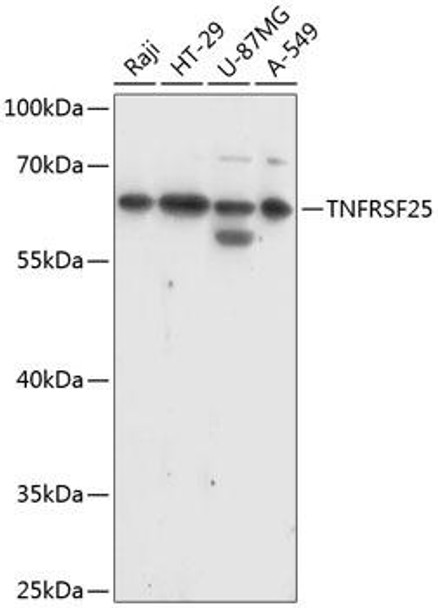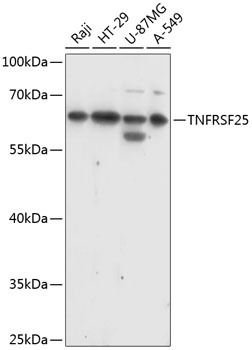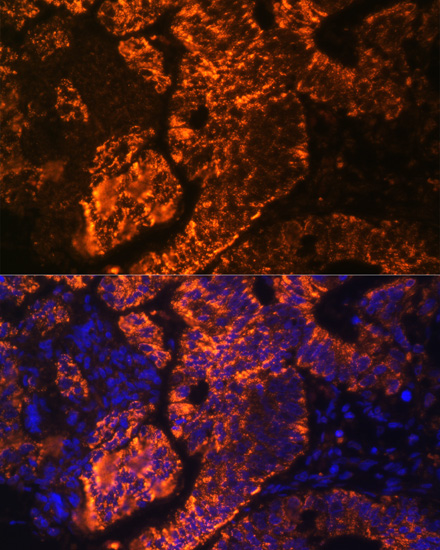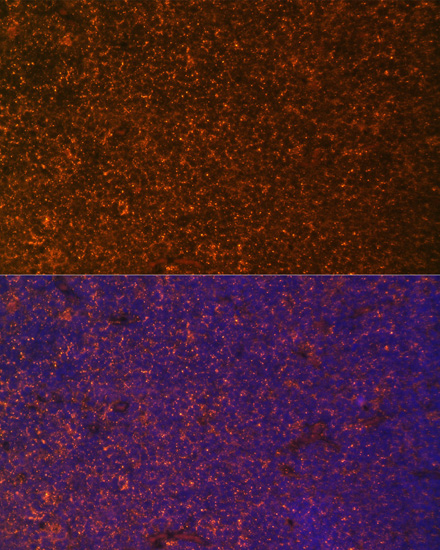| Synonyms: | TNFRSF25, APO-3, DDR3, DR3, LARD, TNFRSF12, TR3, TRAMP, WSL-1, WSL-LR |
| Background: | The protein encoded by this gene is a member of the TNF-receptor superfamily. This receptor is expressed preferentially in the tissues enriched in lymphocytes, and it may play a role in regulating lymphocyte homeostasis. This receptor has been shown to stimulate NF-kappa B activity and regulate cell apoptosis. The signal transduction of this receptor is mediated by various death domain containing adaptor proteins. Knockout studies in mice suggested the role of this gene in the removal of self-reactive T cells in the thymus. Multiple alternatively spliced transcript variants of this gene encoding distinct isoforms have been reported, most of which are potentially secreted molecules. The alternative splicing of this gene in B and T cells encounters a programmed change upon T-cell activation, which predominantly produces full-length, membrane bound isoforms, and is thought to be involved in controlling lymphocyte proliferation induced by T-cell activation. |
| UniProt Protein Function: | Receptor for TNFSF12/APO3L/TWEAK. Interacts directly with the adapter TRADD. Mediates activation of NF-kappa-B and induces apoptosis. May play a role in regulating lymphocyte homeostasis. |
| NCBI Summary: | The protein encoded by this gene is a member of the TNF-receptor superfamily. This receptor is expressed preferentially in the tissues enriched in lymphocytes, and it may play a role in regulating lymphocyte homeostasis. This receptor has been shown to stimulate NF-kappa B activity and regulate cell apoptosis. The signal transduction of this receptor is mediated by various death domain containing adaptor proteins. Knockout studies in mice suggested the role of this gene in the removal of self-reactive T cells in the thymus. Multiple alternatively spliced transcript variants of this gene encoding distinct isoforms have been reported, most of which are potentially secreted molecules. The alternative splicing of this gene in B and T cells encounters a programmed change upon T-cell activation, which predominantly produces full-length, membrane bound isoforms, and is thought to be involved in controlling lymphocyte proliferation induced by T-cell activation. [provided by RefSeq, Jul 2008] |
| UniProt Code: | Q93038 |
| NCBI GenInfo Identifier: | 2501233 |
| NCBI Gene ID: | 8718 |
| NCBI Accession: | Q93038.2 |
| UniProt Secondary Accession: | Q93038,O00275, O00276, O00277, O00278, O00279, O00280 O14865, O14866, B1ALX2, B1ALX3, B7ZLL7, |
| UniProt Related Accession: | Q93038 |
| Molecular Weight: | 29,111 Da |
| NCBI Full Name: | Tumor necrosis factor receptor superfamily member 25 |
| NCBI Synonym Full Names: | TNF receptor superfamily member 25 |
| NCBI Official Symbol: | TNFRSF25 |
| NCBI Official Synonym Symbols: | DR3; TR3; DDR3; LARD; APO-3; TRAMP; WSL-1; WSL-LR; TNFRSF12 |
| NCBI Protein Information: | tumor necrosis factor receptor superfamily member 25 |
| UniProt Protein Name: | Tumor necrosis factor receptor superfamily member 25 |
| UniProt Synonym Protein Names: | Apo-3; Apoptosis-inducing receptor AIR; Apoptosis-mediating receptor DR3; Apoptosis-mediating receptor TRAMP; Death receptor 3; Lymphocyte-associated receptor of death; LARD; Protein WSL; Protein WSL-1 |
| Protein Family: | Tumor necrosis factor receptor superfamily |
| UniProt Gene Name: | TNFRSF25 |
| UniProt Entry Name: | TNR25_HUMAN |









